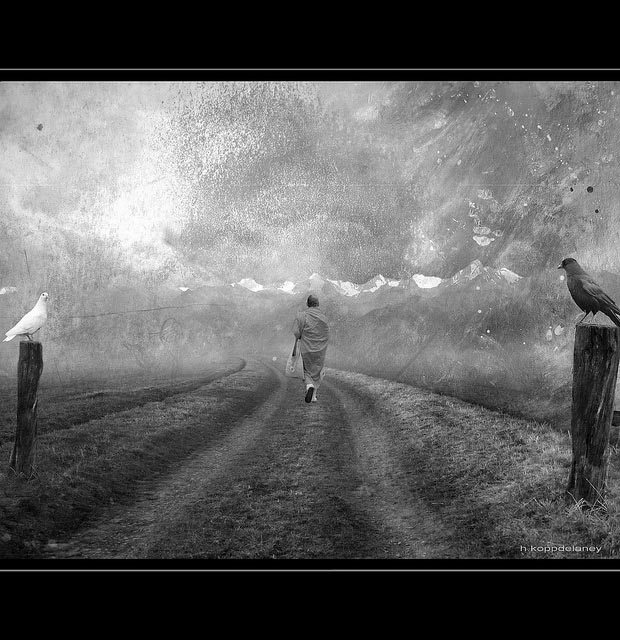
Indian, Young & Spiritual in America
Would you be willing to give up your life, your family and your name? Would you renounce love, marriage and parenthood forever? Could you live with the prospect of never seeing your father and mother again?
Bhavesh Choksi, 27, has done exactly that.
This high-achieving young Indian-American, forsaking all, has taken ‘diksha’, monastic vows, and is on his way to becoming a swami in BAPS Swaminarayan Sanstha, a socio-spiritual Hindu organization. For those of us still embroiled in the trappings of the material world, this decision can be wrenching. Breaking all ties with his past life and giving up even the smallest of luxuries, he is turning his back on what most people fight tooth and nail for. Bhavesh is following his dream, walking into a joyous light which most of us cannot even comprehend. He is obtaining ‘moksha’ and guiding others to find it too.
Bhavesh’s Story…
[dropcap]I[/dropcap]n a sense, without knowing it, Bhavesh was probably walking toward this life-changing moment all his life. Born in a jeweler’s family in Kobe, Japan, he accompanied his father Bipin Choksi, mother Bhadra and sister, Radhika, to New York in 1989. Bipin, who is a pearl dealer in New York, recalls that the family was not overly religious.
“From time to time, sadhus and spiritual speakers would visit Kobe, exposing us to religion and spirituality, but nobody made the impact that HH Pramukh Swami made when he stayed at our home along with ten sadhus in his entourage,” recalls Bipin. “At the time, we had no idea who he was or about BAPS. All we knew is that he was a sadhu of the Swaminarayan faith. However, our family later became more religious.”
The spiritual connection probably began even before birth for Bhavesh: he was born in 1984, exactly three months after Swamiji’s visit. Recalls Bipin: “During Swamiji’s visit, there was an assembly in Kobe at the India Club hall, and my wife tells me that the unborn child was exceptionally active while Swamiji was speaking. On the formal level, his exposure to the Swaminarayan faith was when he enrolled in the children’s group Bal Mandal at the Swaminarayan temple in Edison when he was 9 years old.”
A Father Remembers…
[dropcap]A[/dropcap]ll children are different in the way they react to the complex world around them. At a time when most kids are embroiled in sports and video games, Bhavesh was questioning the world around him. “I remember him telling me that when he was in seventh grade, he went out to play one evening, gazing up into the sky, and questioned this world and the purpose of life,” says Bipin.
“He felt that there must be a deeper meaning to this life and that all things in this world are temporary. It was Bhavesh’s wish since childhood to work towards his own moksha and also to serve society in the capacity of a sadhu. Just like any society needs farmers, doctors, lawyers, engineers, so do we need sadhus for our spiritual needs.” Pramukh Swami, however, insisted Bhavesh attend college first and when he graduated from Boston University, he got permission to join Swamiji in India.
Such a decision can be traumatic for the parents. Here in Bipin’s words is the dilemma of losing a child but realizing that the child is gaining the ultimate joy in life. “Of course we knew if he became a Swaminarayan sadhu that we would have no contact on a personal level with him. We did not know how we would handle it emotionally,” admits Bipin.
“However, when Bhavesh and I met Pramukh Swami when he was entering the monastic life, he requested Swamiji to bless us as his parents that we can handle this separation well. I still remember Swamiji placing his loving hand on my head and telling me, ‘Now Bhavesh is about to sit in God’s lap’ so to keep courage.
“We felt consoled knowing that our son is in the best hands ever, and that he has set out to do what he was born for, and that too, serving as a sadhu of a guru such as Pramukh Swami. As for my wife, she did find it difficult initially, but she felt that the decision would make him really happy and thus gave her willing consent. Naturally, we do miss him, his sense of humor, everything about him, but we are still happy knowing that he is on the right path, one that gives him, and us, immense joy and peace.”
Bhavesh is now known as Shantyogi Swami and lives in Sarangpur. New York devotees who have visited him have come back with a deeper understanding of a sadhu’s life and mission, and commend Bhavesh and other young men for undertaking this divine journey.
Heart-wrenching and emotional as this story is, it is not singular for there are several other accomplished Indian-Americans who have chosen this difficult path in spite of having degrees from Harvard, Georgetown, the London School of Economics, and being engineers, doctors, lawyers, journalists and other professionals. And there are thousands more who while pursuing their careers and family obligations, are also embracing spirituality even while living in a very materialistic world.
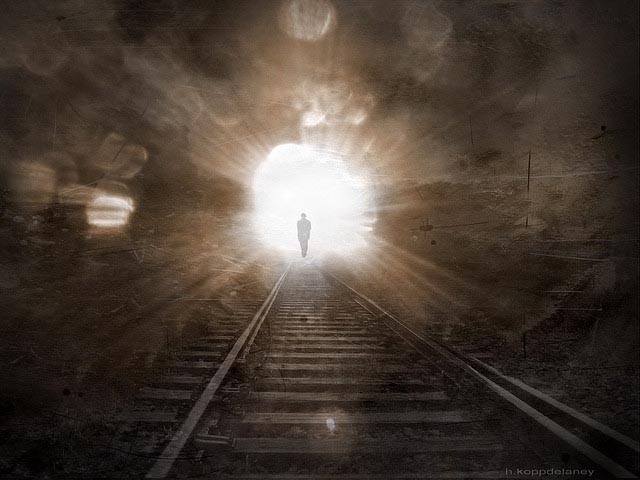
Young and Spiritual – Their Stories
[dropcap]T[/dropcap]he stories are quite intriguing. Balasaheb Darade, who was born in a small village in Maharashtra and propelled himself through education to becoming an innovator and entrepreneur, went on to get a Masters in Science from the University of Cincinnati. He interned with the NASA team at Lunar, and was offered a full time job and American citizenship. He did not take this as in the long run he wanted to work in the villages of India.
Though he did stay on in the US for further studies and creating some startups, he has now gone back to his roots, following Sri Sri Ravi Shankar and Anna Hazare, looking to create model villages. Imagine, having the ability to reach the stars, yet realizing that heaven is in service to the humblest of God’s creations.
For some, spirituality has become both lodestar and career. A Harvard graduate who could have located herself in the world’s top cities is the Program Director for Nouvelle Vie Youth Corp, a social development project in Haiti that she has conceived through IAHV (AOLF’s sister organization).
Raj Modhvadia, 26, of Memphis, TN, had abused substances as a teenager and hung out with the wrong crowd. A few years ago he enrolled in the Isha program and his life turned around completely. He had a yearning to rediscover himself and two years ago he moved to the Isha Ashram in India and volunteers full-time at Isha Home School, working with children.
Spirituality has been the salvation for Jay, (not his real name) a young man who was in prison. Having taken the Art of Living course, his life is transformed and he is undergoing teacher’s training to teach other youths through the public school program YES for Schools.
Something is surely amiss in our chaotic, frenetic lives as we struggle to find happiness material achievements, bigger homes, and bigger job titles. Having achieved all this, the appetite for happiness is never satiated as each acquisition leaves one hungry for something more elusive.
What is that faceless, nameless thing that we all are searching for?
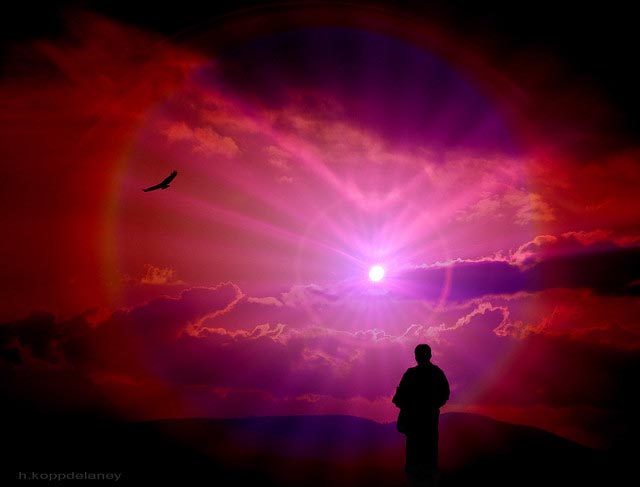
The Spiritual Masters
[dropcap]W[/dropcap]hen Sri Sri Ravi Shankar of the Art of Living had a marathon meditation event in the cavernous Alice Tully Hall in Lincoln Center, over 2700 people flocked to it – and many were young people who could have chosen to be at a bar or a rock concert instead. Hundreds were totally committed volunteers who had given up all other activities to put the I-Meditate event into place and make it a major happening in New York.
Shefali Aggrawal is a young New York lawyer who decided to give up a year of her paid professional life and volunteer as a full time teacher for the Art of living foundation. Indeed, meditation seems to changes one’s very thinking. Shefali found her sacrifice was a new way to help people.
“I am inspired by the change which happens when people are at peace within themselves,” she says. “I used to work with poverty-stricken and mentally ill clients for years and I realized that while giving legal advice was very important, I could not help effect real change in their conditions. By teaching people skills to manage their mind and emotions, they are able to push through big stressors in their life and reach their fuller potential.”
She adds, “Religion and nationality are concepts that we have created, love, compassion, kindness are values which are universal and belong to every citizen of the world. Meditation allows us to relax and blossoms these human values which are actually our true nature.”
[dropcap]I[/dropcap]ndeed, spirituality helps both the giver and the receiver. Parneet Gosal, a digital strategist who has worked with start-ups and brands like American Express, Martha Stewart Living Omnimedia and Saks Fifth Avenue, found a whole new path through meditation, and now her own digital strategy consulting firm, Seedwalker.
“I’m like most New Yorkers, juggling multiple balls with a lifelong addiction to overachieving,” she said. “I also consider myself savvy and immune to transient fads. Late last year I attended a meditation class with my mother with the dual – albeit half-baked – goals of increasing my energy level and improving my mother’s long term health. I was by no means convinced that we would achieve either.”
She adds, “As it turns out, the class helped us with both goals…and then some. It was instrumental in my decision to launch Seedwalker and it helped my mom tremendously. I now work with I Meditate NY to help educate other New Yorkers just like me, who sometimes let misguided beliefs stop them from achieving their health goals.”
This seismic shift toward spirituality seems to be a major change in many second-generation Indian-Americans. Earlier for many youth, anything to do with religion or spirituality was anathema as they tried to merge into the mainstream and fit into school and college, and the larger community. They did not want to appear ‘different’ from their peers. So why this change now?
Part of the answer lies with the changing, evolving Indian community and part of it with America itself. As the Indian population has grown, so have the resources. Where previously there may have been a small basement in an apartment converted into a makeshift temple where Hindus would congregate in remote outposts of small towns, now there are hundreds and hundreds of world-class temples across the US, and spiritual leaders regularly visit from India to give discourses.
[dropcap]A[/dropcap]n example is the BAPS Swaminarayan Sanstha which runs about 64 temples in the US, each of them having their respective forums for children as well as for the youths. The sadhus have designed well-structured programs which aim to lead participants in becoming more spiritual and in line with the Hindu faith, encouraging them to lead pious and moral lives and help society
America is changing too with temples, mosques and gurudwaras sprouting up besides the churches. The mainstream is also more open to different faiths and traditions, and yoga, meditation and vegetarianism are becoming common practices. Indeed, yoga and meditation have been embraced by most Indian-Americans after these become a common phenomenon in America, and at a time when health care professionals advocate them for stress control and overall health.
[dropcap]I[/dropcap]n such an atmosphere, it has become easier to explore spirituality. The practice of meditation may be thousands of years old but it is perfectly suited to our very stressful modern times, when in order to go fast, you have to learn to slow down. Spurring it on is the phenomenon of social media where everything is amplified through Twitter and Facebook, with the sharing of favored practices and ideas. Being spiritual is no longer regarded as weird or exotic.
The giving back tradition in America also appeals to many young Indians who have grown up here and are involved with volunteering in temples and spiritual organizations like BAPS, Art of Living Foundation, Isha, Swadhiya Pariwar (of late Padurang Shastri) and local temples. Some have re-oriented their lives totally to embrace spirituality, becoming teachers or bramacharis at spiritual organizations.
[dropcap]T[/dropcap]his is in interesting contrast to the traditional Indian mold where life was divided into periods marked by childhood, youth, middle-age, and old-age, and where spirituality was ascribed or recommended only in old age (after the grihasti period – householder period). With 50 being the new 30, it’s no surprise to see older people still enmeshed in worldly work and money-making, while it is the younger people who are more into searching for the meaning of life and death.
So what’s causing this? What are the influences that are driving youngsters—who might otherwise be into partying or career-climbing—into spirituality? Young people seem to get into spirituality for a number of reasons including family influence, a sense of belonging with spiritual organizations, or a need to find the meaning of life.
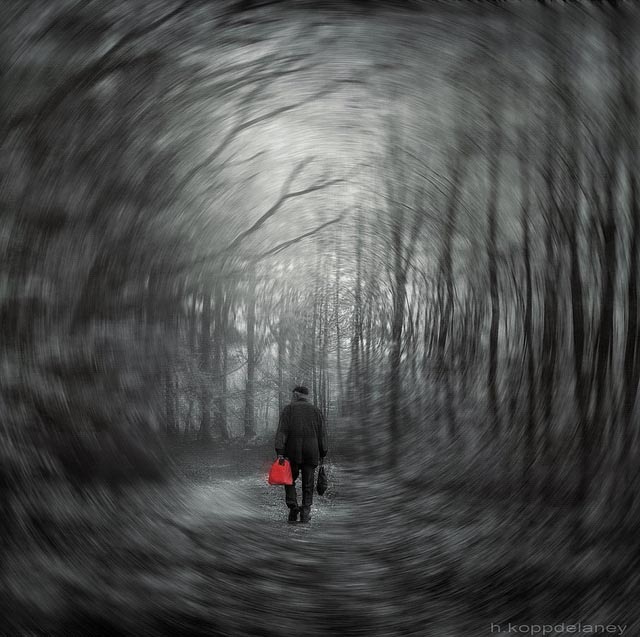
What are Young Indian-Americans Searching for?
Neil Pathak
[dropcap]W[/dropcap]e talked to several young people to find out about their personal journeys and encounters with spirituality. Neil Pathak, 17, was brought up by parents who are both physicians and committed Isha volunteers. He himself started the program at the age of 12, and he credits yoga with helping him overcome his health problems and also in acquiring focus and clarity. He became the valedictorian of his high school, received several international awards and recently got accepted to Yale University. Recently he single-handedly organized a fundraiser for rural children’s health for Isha Vidya.
“Spirituality is deeply rooted in my dedication to yoga, as it not only gives me a sense of calm, but also provides me a foundation of dedication and focus that helps me with my school work and actually enhances my relationships with friends, faily and other people,” says Neil. I recommend this lifestyle to others. It does not involve balancing two worlds, it simply is an addition to one’s life to result in an overall calmer, more joyful, and more focused life.”
Leena Athparia
[dropcap]F[/dropcap]or some young people, the challenge is even greater. Into the mix of growing up Indian in America is the added complication of growing of in an inter-cultural home, a more and more common occurrence. Leena Athparia of Toronto, Canada grew up with a mother of British-Irish heritage and a Protestant Christian background and a father who is a Hindu from Assam, India.
Growing up with two religions and two cultures, Leena learned to keep an open mind: “Both parents were not very religious, but allowed me enough exposure to understand Hinduism and Christianity. I never strongly identified with either religion, but considered myself spiritually inclined,” she says.
A dedicated violinst, Leena has always had the underpinnings of spirituality and after starting Isha Yoga, her experience of music has shifted to a deeper level and continues to evolve. Having graduated with a BA and BSc, she is studying to be a Naturopathic doctor and has graduated from the music conservatory in piano and violin. Yet to her, the whole definition of success has changed, and to her the accomplished life is one of volunteering at Isha Ashram, working in its garden and teaching music to the children.
“As much as I know I could do well in my career, I feel the longing to grow spiritually,” she says. “ Whether its living in an ashram, or volunteering at the Rejuvenation Center, or contributing my musical skills, I would like to devote my time and energy to what I feel is the most worthwhile – which will always have a spiritual inclination.”
Asked about the rewards of getting off the ambition and acquisition treadmill, she says, “The rewards can’t be quantified – they have been more than I could have ever imagined. I see so many friends and family around me struggling with stress and life situations, and I feel that I would have been in a similar situation, if it weren’t for the Isha yoga practices that I’ve incorporated into my lifestyle.”
Anand and Mili Gandhi
[dropcap]A[/dropcap]nand and Mili Gandhi, both in their 30’s, live in Detroit and have also made spirituality a priority in their lives. Anand works with Ford Motor Company and Mili is a physical therapist. Currently both are part-time volunteers at Isha, but plan to move to India to become full time volunteers at Isha Home School. “Religion was not a huge part of my background,” says Anand. “ My mother did pray every morning but I rarely saw my Dad pray. We would go to the temple a few times a year.”
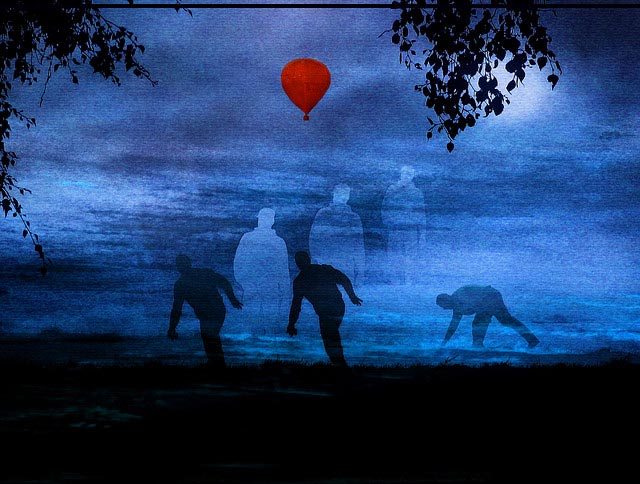
Growing Up Indian in America
[dropcap]G[/dropcap]rowing up Indian in America was stressful, recalls Anand, for balancing Indian values with American society was not easy. “I did my best to separate my family from my friends since there was a big disconnect,” he says. “ I felt most comfortable with my Indian American friends and with other relatives because we were all similar in terms of the experiences we were going through.”
His training at Isha helped him to see how both worlds could gel by doing many of the things he used to do earlier but with a different mindset or awareness. He feels he can now handle difficult situations with calm, is in great shape, and is able to better balance his life. Anand says, “Spirituality is now a big part of my life from the smallest of things in terms of respecting the food I am eating to the biggest of things such as trying to be one with everything around me.”
Ravi Naidu
[dropcap]T[/dropcap]he spiritual path has also led some to offbeat careers – such as stand up comedic Ravi Naidu of Atlanta worked for IBM and other corporates before jumping into standup comedy. Becoming more spiritual almost seemed to grant him permission to try the less traveled road.
Growing up, religion or spirituality was not a big part of life although all Indian festivals were celebrated. He recalls: “I never understood anything about them. We didn’t have a temple in Atlanta when I was growing up. If we did I’m sure my parents would have gone pretty regularly, but I wouldn’t have cared for it.”
He also underwent an identity stress, like so many Indian-Americans at that time. “I never felt like I fit in with anyone,” he says. “ I wasn’t like any of the American kids and I also wasn’t like any of the Indian kids. I tried to be as American as possible. I was even uncomfortable with my own “Indian-ness.” So, I became a coconut (only brown on the outside).”
[dropcap]H[/dropcap]e encountered spirituality in a roundabout way. “ I didn’t know I was looking to bring spirituality into my life,” he says. “I just knew that something seemed to be missing even though I had a great life, in many ways. I found out about a talk that Sadhguru was giving in Atlanta and I went. For the first time a “spiritual type of person” was talking about things in a very practical and realistic way, very applicable to my life. So, I took the 7 day Isha Yoga program and haven’t looked back since.”
Asked about the rewards of following a spiritual path, Ravi says, “ It’s beyond a reward to be given the tools to see life beyond the basics of human survival. To realize that life only happens within this current moment and that I am 100% responsible for everything that happens in my life has been the greatest gift and I wouldn’t trade it for anything. It permeates my everyday life, actions – my very being. My perspective on life is filtered through the sieve of spirituality.”
Monica Gupta
[dropcap]F[/dropcap]or Monica Gupta of Atlanta, who is in her 30’s, religion had always been a way of life. A dentist and a new mother, she finds it has been her defining guidepost. Growing up, her parents made sure culture, language and traditions were very much a part of her life. She says, “They made sure we sat for evening puja daily, took us to the temple, hosted pujas, taught us mantras and bhajans as well as their meanings. They did everything to set an example for us.”
Yet it is spirituality gleaned from her training at Isha, that helps her to go to work, come back to her husband and baby, attend to family and friends and do all that is needed, with less struggle, both internally and externally. “Spirituality is an internal compass that guides you in the external world,” she says. “ It does not require one to abandon their everyday duties in daily life. In fact, it enhances the journey and experiences we call life. It allows you to go through life untouched, effortlessly. It helps you function more smoothly, like a well oiled machine.”
Service is an important part of spirituality as young people learn to give back to the communities and in doing so enrich their own life experiences. Anju Bhargava, a member of President Barack Obama’s Advisory Council on Faith Based and Neighborhood partnership, is the founder of Hindu American Seva Charities (HASC) which is a service partner with the Corporation for National & Community Service. She finds the younger generation is very open to giving back and making a difference.
“Service, especially yoga, is a bridge builder with the community at large; it increases acceptance of the New Americans, promotes peace of mind and harmony and reduces potential conflicts with the communities in which we reside,” she says. “More than ever, the service mindset, the sharing of resources is important now, at a time when anti-immigrant rhetoric is increasing.”
Spirituality helps one to know one’s self and then multiply the peace and joy by helping the many. It is an important pathfinder and a self-help tool in an increasingly chaotic and fractured world. More and more young people seem to be internalizing these lessons to make sense of the world they live in.
Sreeratna Kancheria
Sreeratna Kancheria, 33, of Atlanta, Georgia, left the high paying world of law to working in a university, in placement of students into village projects in India to help underdeveloped societies. Last year she lost her father, and she feels spirituality and meditation helped her navigate through that desolate time of grief and find her bearings with this new meaningful work.
Raajiv Rai
[dropcap]R[/dropcap]aajiv Ravi, 33, is a young phyisican in San Fracisco who met his wife, an Italian, while attending an Isha Yoga program. They got married recently and his wife has already become a full-time volunteer at the ashram, and Raajiv is giving up medicine to become a full-time volunteer too. Born in Mumbai, Raajiv grew up in a home where he was exposed to the Hindu way of life and a spiritual upbringing.
“Coming from a large family setting, my parents had a total of 12 siblings, the constant coming together of families meant staging dramas filled with Hindu mythology, singing bhajans and offering flowers and fruits to the Gods,” he says. “I grew up to realize that these experiences in my formative years made me the person who I am today.”
Yet none of this helped solve life’s deepest mystery – human existence. He says, “All the religious beliefs and practices couldn’t provide me with the answers that I was looking for. Rather than losing hope and fretting away my life, I decided to pursue what was immediately ahead of me with a strong hope that I’ll find answers to this newly formed volcano of questions one day.”
At Isha he found some important answers. “This program has only made my belief stronger that as a seeker one has to be grounded in the physical world to experience higher growth in spirituality,” he says. “The simple yet powerful kriyas that I’ve learned and come to practice regularly have enhanced my way of living. Whether I’m rock climbing in Palm Springs or attending underground music events at the Elbo room in San Francisco, the daily practice helps preserve my inner balance and keeps me focused on the larger aspect of life.”
Raajiv has found that this tool helps him stay in the moment whether he’s trekking in the Muirwoods with friends or delivering a key presentation on healthcare taxonomy. His energy levels are great and fear and self-consciousness are more easily transcended. He says, “This newly acquired way of life has helped bring wholeness and vitality into my life allowing me to enjoy the spiritual path while very much staying alive and kicking in the physical world. I’d absolutely recommend this to everyone – including the doubters to give it a try and see themselves grow into wonderful human beings.”
[dropcap]A[/dropcap]nd that brings us full-circle to Balasaheb Darade, who gave up a lucrative future in America for the struggles of village India. While he did have spirituality embedded in his DNA by his family upbringing, he felt it has been channelized and energized by the teachings of Sri Sri Ravi Shankar and the Art of Living. Even in the US Balasaheb had started teaching meditation classes and was also involved with Anna Hazare’s anti-corruption drive in Cincinnati.
He is now working in small towns and villages, places where Internet access is sometimes hard to come by and NASA and glittering America are a world away. Inspired by Sri Sri Ravi Shankar and Dr. Abdul Kalam who are both involved in the resurgence of village India, Balasaheb is working toward making sustainable model villages and empowering youth in the villages. As he points out, 70 percent of India’s population is under 35. He eats the simple village meals, inspires the youth and listens to their ideas and solutions, sharing and giving them visions for the future.
He feels that spirituality has shown him the path for his life. “ Spirituality has made me so strong and there’s a sense of fulfillment. Nothing can faze me – there is a lot of inner strength. I’m so grateful for everything in my life. There is that fullness and out of that fullness, I want to contribute. Service for me is an expression of joy and doing service is like a long meditation for me. You see so many smiles on people’s faces and it comes back manifold to you.”
(C) Lavina Melwani
(This article first appeared in Khabar magazine)
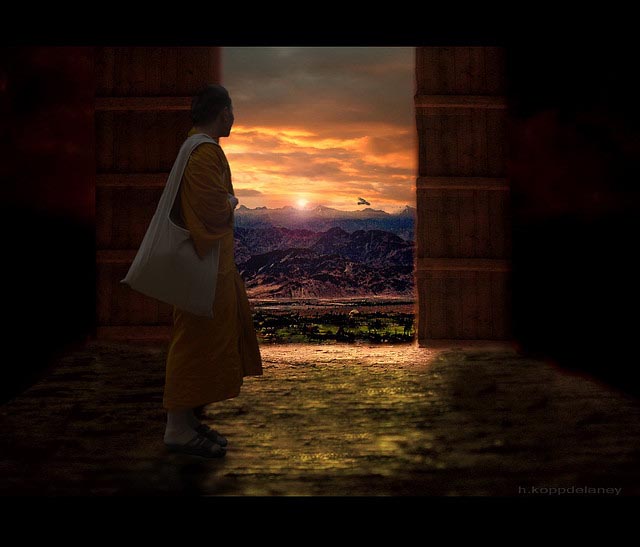
The Monk’s Way
[dropcap]S[/dropcap]waminarayan sadhus have a very strict discipline to follow 5 principal vows: minimize desire, taste, greed, ego and attachments. Intitally they go to the Seminary which is in Sarangpur (near Ahmedabad, Gujrat). The training is a minimum of 5 years, very structured and comprehensive.
In the initial period, as a novice sadhak (12 to 18 months), they serve in the mandir, study the Hindu scriptures, learn devotional songs and prepare for a life of seva and austerity. Then, once they obtain written consent of their parents, Pramukh Swami initiates them into the parshad order (white robes). Thereafter, 12 to 18 months later, they receive bhagwati diksha and the saffron robes of a full renunciate. Their training then continues at Sarangpur.
The sadhus do all the work connected with the management of the temple, including cleaning and cooking. They wake up daily at 4 a.m, bathe, do personal puja, then attend temple services; they then do morning chores, breakfast, classes, lunch, personal study, meditation, more classes and, at 7:30 pm the evening arti is performed. After dinner, there are further activities, with each spending an hour in personal study before bedtime at 11:30 pm.
Each sadhu undertakes a waterless fast five days out of the month. For meals, each sadhu mixes the prepared dishes together in his wooden bowl and partakes of the same as a discipline to curb the desire for food. When they travel out of the ashram, they do so only in pairs. They do not touch money and observe complete, lifelong celibacy.
The Boy Who Renounced the World
[dropcap]F[/dropcap]or the time being he shall be Nameless. He has renounced his home, his family, his friends – so why not his name too? Very soon this 20-something, accomplished American born Indian will have a new name and a new life – that of a BSS swami. Here as he moves toward the light and nirvana, he answers the frenzied questions of those still embroiled in our world of attachment and wants…
How did spirituality come to you at a young age? Why did you decide to take diksha?
It was something that just seemed so natural. There are some things that people are just inclined towards, and spirituality was something that I had an attraction to. I loved connecting with God and feeling his divine presence.
I decided to take diksha because of the selfless and pure love of Pramukh Swami Maharaj. There was a sense of satisfaction that I received from helping people as I was growing up. After college, I realized that this path was the ultimate sacrifice and ultimate contribution. I was giving away what was dear to me for the greater good of an entire community, potentially, the entire world.
Was that decision easy and conclusive, or was there struggle involved in coming to terms with leaving behind the life of family and career, etc.?
On the surface it may seem like giving up everything is such a tough thing to do. But honestly, after being showered in Pramukh Swami’s love, it is so easy to do. Yes there is happiness in worldly things, but there is a different type, a higher divine happiness that comes in pleasing God and his choicest devotee.
How involved or enticed were you with so-called “normal” interests of growing American children?
I was very big in sports. I enjoyed all aspects of sports – watching games, going to games, playing different types of sports. I also enjoyed being with my friends – getting together at someone’s house and making food, relaxing, and just having a good time.
What does diksha entail? Please tell us the steps and process.
There are two dikshas that take place. The first is called “parshadi” diksha where you are initiated into white cloths and given a parshad name. This happens after being in the Sarangpur training school for 1-1.5 years. The second diksha comes after another 1-1.5 years, which is called “bhagwati” diksha, where you wear the saffron clothes and receive a sadhu name. Then, you stay in the training school for another 3-5 years where you complete your training scriptures, sangeet, spiritual discourses, penance, seva, and bhakti.
What is the hardest part of doing this? Please enumerate the do’s and don’ts of a monk’s life. Did you or do you ever second-guess your decision?
Sure, becoming a sadhu is tough, but the love of Pramukh Swami Maharaj and seeing his continuous sacrifice for everyone makes sadhu-life so much easier. There are 5 main vows for sadhus – non-lust, non-taste, non-ego, non-attachment, and non-greed. I haven’t second guessed my decision because this is something I truly enjoying being and love devoting my life to God. Offering devotion and doing seva and helping society are things I have a passion for and love doing.
Would you recommend this to others?
Definitely. Just as you would recommend your profession to someone, I would recommend this. I’m not saying being a sadhu is a profession. Instead, it is all about your devotion and service to Bhagwan, but you get my point.
What for you are the biggest rewards?
My biggest reward is I know I am pleasing my guru. I know this is not the only way to please my guru, but just as there are many ways to please your family or your boss or anyone else, this is the path I have chosen to truly please my guru.
How do you think it helps you to fulfill your role in the world and find the meaning of life?
Being a sadhu allows me to help connect society with God and feel God’s divine presence. Moreover, I am able to talk to others about being moral and ethical citizens of society. Regarding the meaning of life, I think the meaning of life is to please God and do good for society, both of which I am able to do as a sadhu.
For those who cannot follow this path, what would you suggest as the next best thing?
Live a moral, value-based, and devoted life as a householder.
What is the inspiration or mantra which keeps you going, through good times and bad?
The inspiration which keeps me going is looking at my guru – Pramukh Swami Maharaj’s life. Seeing how much he has gone through, all the sacrifice he has made, all the hardships he’s had to deal with, and yet that constant serene smile of absolute contentment is what keeps me going. He has done so much for society without ever looking at his own personal needs or wants. Seeing how dedicated he has been to God and society is an ever-motivating facet for me.
Sheela Rajdev: Journey to the Moon Within
[dropcap]“M[/dropcap]y mom still recollects that when she came one day to my first grade class wearing a sari I was shocked because I had never seen her wearing Indian clothes,” says Sheela Rajdev. “When I look back at it, I don’t think I realized I was Indian or what it meant. I wasn’t identified with Indians or having any particular background so I didn’t have any stress about my identity.”
It was complete assimilation for the family had never returned to India, the children did not speak any Indian languages and non-Indian food was served on the family table. Friends were from every background and Sheela could not relate to new Indian immigrants because she simply had no reference.
Like many Indian children who grew up in the American hinterland, she had few markers of Hindu cultural or spiritual life. Her father was an engineer at BASF and mother was a medical director at Henry Ford in Farmington Hills, MI. “We were not oriented towards any particular religion, no lamps lit at home or God’s pictures,” she says. “I went to the temple and even a church a few times but only for the day camps or math classes.”
Later in life her parents rediscovered religion and things changed when Sadhguru Jaggi Vasudev of the Isha Yoga Program came to Michigan.
“Summer before college, I was taken to an introductory talk and with my attention totally elsewhere, half way through I took the car keys and drove off to my best friend’s graduation party thinking I don’t need any advice on how to be happy!” says Sheela.
The next year, after freshman year at college, she and her brothers attended a 7 day Inner Engineering program with Sadhguru. “This time I looked up at the man behind the microphone, opened my ears, and put down a few of the barriers and resistances I had towards so-called spiritual teachers,” she remembers. “I listened to what he had to say and his logic hit me, his wisdom seemed unparalleled and his humor started to soften me up. He was not talking about some god somewhere or asking me to believe in anything but just to look at myself a little deeper.”
How deep?
As deep as she was willing. The more willing she became, the more she discovered and suddenly the world inside of her, she found, was so much bigger than the one outside. “I realized the difference between religion and a true spiritual process,” she says. She visited India for the first time, spending a month in silence and volunteered at the Isha Yoga Center in Coimbatore, a life-transforming experience. Ten years have passed, 7 of them as a full-time volunteer and 3 of them living in India. – All of them extremely happy and peaceful.
“I didn’t realize it but all my life I was trying to fulfill some unquenchable thirst for happiness and a sense of completeness,” she says, running from goal to goal, imagining each would take her somewhere. She adds, “It became so painstakingly clear that nothing on the outside would satisfy me.”
One big question overwhelmed her: ‘What is this all about and what am I looking for?’ Sadhguru’s program called Inner Engineering gave her the tools to find this answer within. She says, “That thirst is quenched and whether I do something or don’t do anything the experience is equally as beautiful.”
At the age of 29, Sheela has found the inner contentment that most people struggle all their lives to find. She quotes Sadhguru: “The world is trying to do so many things. We’re trying to go to the moon, to Mars, but, fundamentally, I feel the most important thing is human consciousness, the quality of life here. How happy we are here simply depends on how we are within ourselves.”
Related Articles:







13 Comments
We have been attached with BAPS Swaminarayan Sanshtha since 1997. We have been in Metro DC, SF Bay Area and now Metro ATL. It would not have been without the BAPS Sanstha.
Hi Aarti, so glad you liked the piece. Bhavesh and his family are indeed remarkable. It’s so interesting that often times these real-life spiritual stories are happening far away from India!
Hi Lavina,
Thanks for a lovely piece – Bhavesh’s story especially resonated with me, as we were born just months apart in Kobe, Japan (our families are good friends). The path he’s taken is really astounding and deserves to be chronicled.
Leena, so glad you think so! It is a fascinating topic and the more I research it, the more I find many young Indian-Americans searching for something more in life than just a job and a paycheck. So you are in good company but the challenge is to have a balance in life.
Lavina, once again, another ABSOLUTELY WONDERFUL article! It is so nice to know there are Indian-Americans from the Hindu community who are seeking something more than just material aquisitions and successes. The article made me realize I am not the only one on this path. I don’t feel so alone anymore. Thanks for this article.
Archena, thank you for sharing! You have a large BAPS community in the US so I’m sure no new place is alien to you. Religious and spiritual spaces create a welcome sense of community for newcomers. Just visited the new BAPS Akshardham Temple in Delhi – it is stunning.
Hi Jinny – thanks for your comments. You’re one of the people who have incorporated spirituality into a busy New York lifestyle. It’s wonderful how balanced and centered one can feel with a spiritual mind-set and it’s really an ongoing journey to make this a part of one’s routine.
Meghana,that’s the beauty of it – you can incorporate as much spirituality in your life as you find comfortable.
Hi Kalpana, thanks for your comment – yes, this was a lot of work but I did it over several months as a cover story for a publication. You’re right – we do tax our children a lot and sometimes they know better than us what is of real value. Many of us come to the west for material gain but our children, having grown up in mostly comfortable surroundings, are now searching for answers to spiritual yearnings, the missing link in life.
Thanks for writing about this Lavina!
We have been regular members at BAPS for over 13 years now.
We used to live in Arlington, VA and went to the BAPS Mandir in Beltsville, MD.
When we moved to the SF Bay Area in 2000, there was the BAPS Mandir in Milpitas, CA.
Now since 2004, down south in metro Atlanta and we still have our BAPS Mandir here and this is the big shikharbadh one now too.
It has just made moving and settling down in new places easier since we know we can go to our Mandir.
Lavina,
This is a great compilation, thanks for putting it together. While spirituality was historically pursued by the older generation or the deeply religious, it appears there’s a new crop of young people either giving up the life they were trained for or pursuing this in parallel with their professions. That’s quite a shift, isn’t it?
The pursuit of ‘what’s my purpose?’ was considered a preserve of those who had already accomplished a lot or those who were suffering a mid-life crisis. Great to know people are asking that question of themselves at a younger age.
Jinny
I wouldn’t. Spirituality can be a part of life, and an on-going quest to find peace, love and faith in everyday things, but cannot define life for me..
Hi Lavina
What a lot of work you have put in to tell us about something we never knew was happening right under our noses. I completely agree. The challenges of growing up in America really stress our kids because we expect them to excel in too many things and want them to have the Indian values we think are the right values to have and the Western values we choose for them.
What we forget along the way is that almost no one pursues more than one activity as an adult (outside of work); on top of that we also don’t ever seem to remember that childhood is the only time when they are free to do what they want to do. There’s no time to pause, explore, reflect. I think we had that, to a great extent, growing up. I think almost everyone with adequate comfort who grew up in the old days (until the 70s for sure) experienced the magic.
My son has told me, for several years now, that his ultimate goal in life is happiness. And, if it means that he does not shine or reach the peak in his life in his career or any other endeavor it does not matter to him, especially if it infringes on his sense of peace and happiness. At 17, he seems to be wiser than his mom who is 50. I’m still chasing true happiness. Always enjoy your work, Lavina. Thanks!